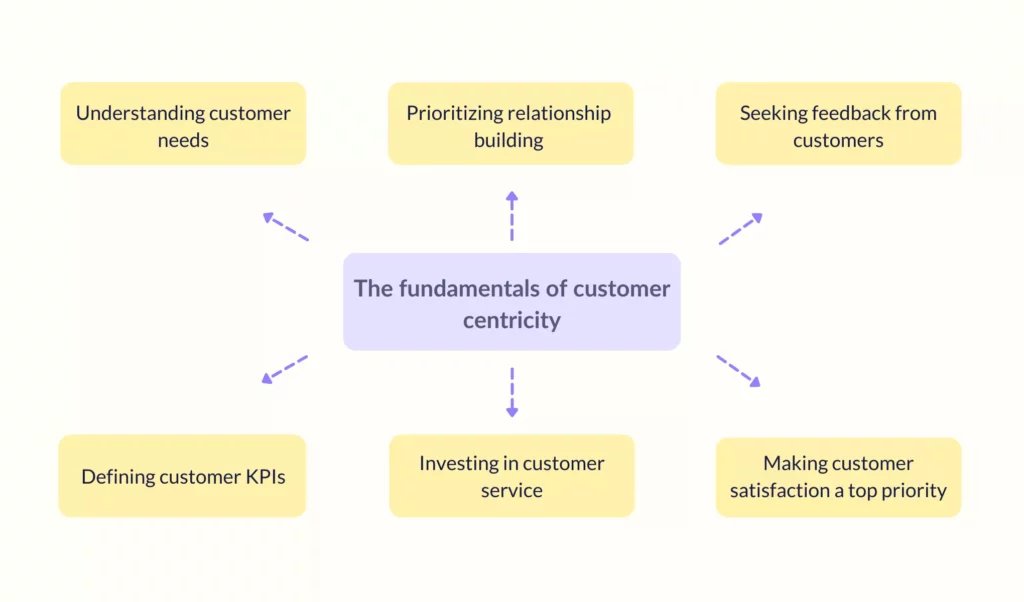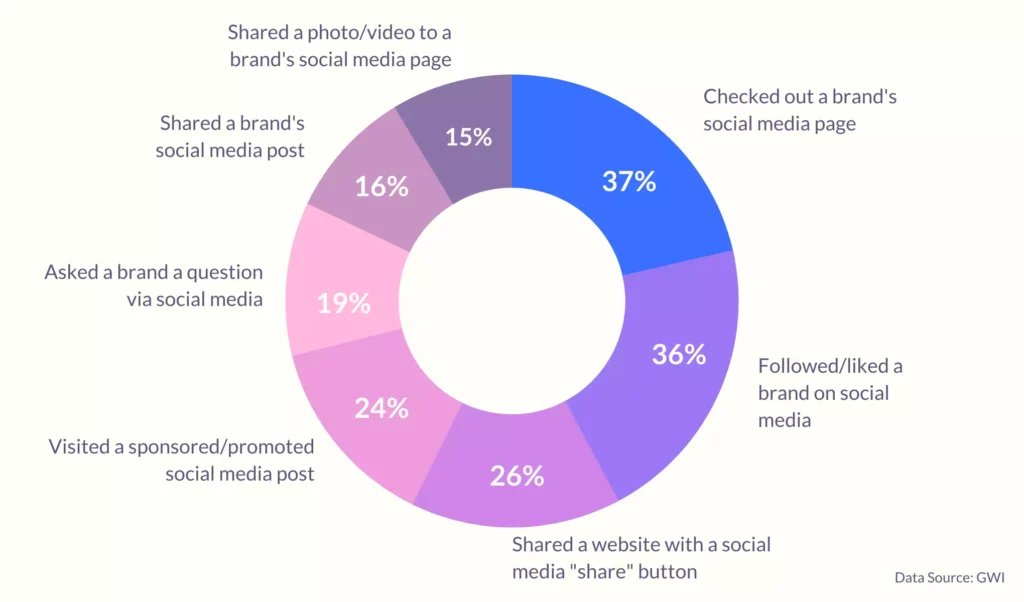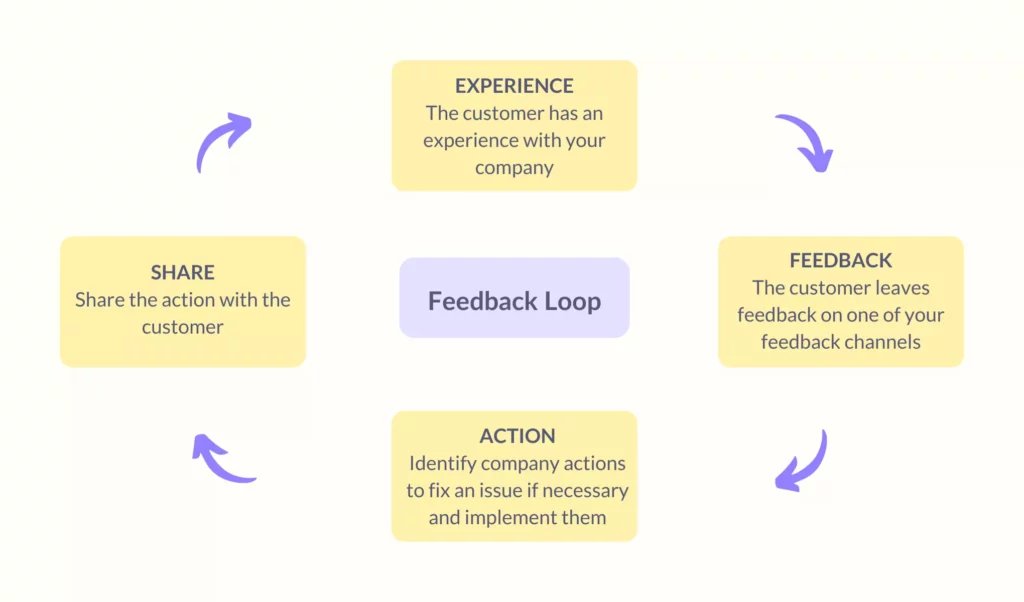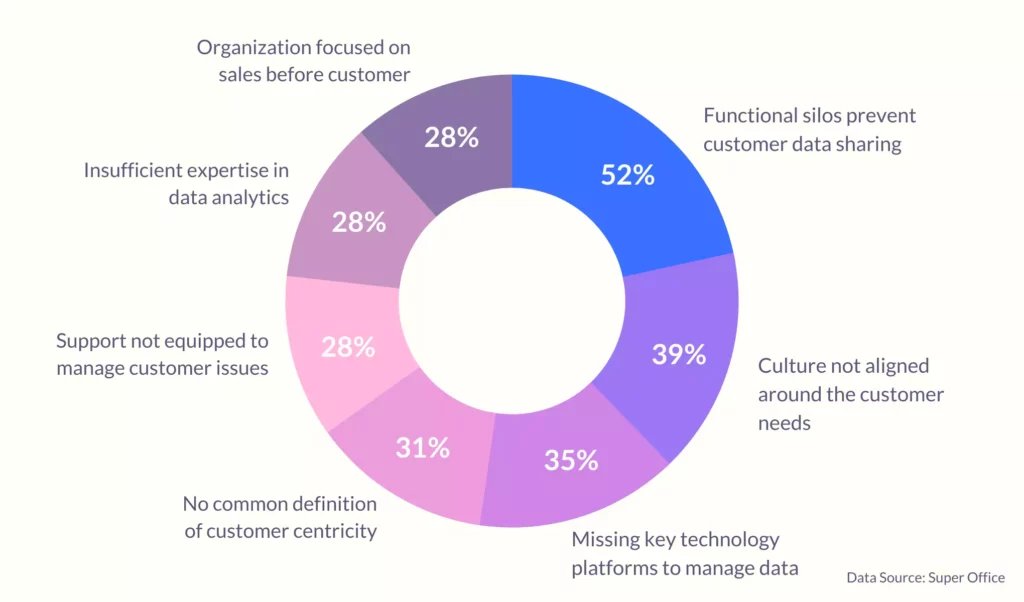
Table of contents
8000+ teams use Hiver to delight their customers!

How to Build a Culture of Customer Centricity in Your Organization

Table of contents
In the Experience Economy that we find ourselves in, there’s no better differentiator than customer experience. To stand out from the crowd and sustain in this hyper-competitive market, you need to create experiences that delight customers. That makes them want to return to your brand, again and again.
The importance of delivering a great customer experience is something that’s backed by research.
- Brands with superior customer experience bring in 5.7 times more revenue than competitors that lag in CX.
- Companies that lead in customer experience outperform laggards by nearly 80%.
- 66% of consumers consider customer service to be a dealbreaker when buying something
CX thought leader Kerry Bodine puts it across in the best possible manner: “Exceptional customer experiences are the only sustainable platform for competitive differentiation.”
But delivering great customer experiences isn’t just about resolving a customer query on time, fixing a complaint, or throwing a sale.
It runs deeper than that. It’s about cultivating a mindset, a philosophy, a cultural identity, that empowers your organization to want to serve customers in the best way possible.
This brings us to the topic of customer-centricity.
Table of Contents
- What is customer centricity?
- The power shift that happened
- How do you create a customer-centric culture?
- Everyone needs to participate
What is customer centricity?
Customer centricity refers to a set of beliefs, ideas, and values that places the customer at the core of everything an organization does.
It is a strategy and a culture of doing business that focuses on creating the best experience for the customer both at the point of sale and after the sale in order to drive profit and gain a competitive advantage.

An organization that is able to adopt this approach on a consistent basis across all its levels is said to have a customer-centric company culture. Examples of such organizations include Amazon and Zappos.
All that being said, you might still be wondering: why is there a burning need to create a customer-centric culture? Can’t brands keep their head above water these days just by doing the bare minimum?
The power shift that happened
Customers today have different needs and expectations, compared to a few years back. They’ve got higher standards and most importantly, are more self-aware as to what they want and what they don’t want.
And if you chip in the fact that they’ve got a plethora of choices to pick from, it’s safe to conclude that there’s been a power shift in the market.
What used to be a market once dominated by brands – till even a decade ago – is now influenced by the whims of customers. Merely offering low prices and discounts while providing mediocre and run-of-the-mill experiences won’t work anymore.
The advent of social media and digitization has transformed the way consumers interact with brands. It has also contributed to modern-day customers yielding more power and becoming extremely choosy.
According to a study, 58% of consumers find it more engaging to connect with a brand or company on social media than to visit a physical store Another study finds that 54% of people that have social media use it to research products.

And with close to 71% of the companies agreeing that the cloud has influenced the customer experience, it’s imperative that companies offer experiences that cater to these changing needs and expectations.
You need to design products and services that your customers actually want to use. Your marketing messages should be specifically tailored to drive more interest in your offerings. The after-sale support you offer must match the pre-sale expectations, and not leave your customers frustrated.
The glue that binds all these different aspects of the customer experience together is your company culture. The more customer-centric your culture is, the easier it is for various departments to understand and meet expectations. This ultimately ensures smoother and more memorable customer journeys and also higher profits; customer-centric companies are 60% more profitable than companies that don’t focus on customers.
Now, let’s discuss how do you create a customer-centric culture?
How do you create a customer-centric culture?
1. It stems from your philosophy
As cliched as it sounds, customer-centricity needs to be part of your company philosophy, values, and mission statement, first and foremost. It needs to address your values towards both your internal and external customers.
A larger benefit of imbuing a customer-focused philosophy is that it gives something customers can identify themselves with.
“People don’t buy what you do; they buy why you do it. If you talk about what you believe, you will attract those who believe what you believe,” says famous author and motivational speaker Simon Sinek.
Looking for inspiration? Here are some cool mission statements that reinforce customer centricity:
Amazon: “To be Earth’s most customer-centric company, where customers can find and discover anything they might want to buy online, and endeavors to offer its customers the lowest possible prices.”
Southwest Airlines: “Dedication to the highest quality of Customer Service delivered with a sense of warmth, friendliness, individual pride, and Company Spirit.”
Whole Foods: “Our deepest purpose as an organization is helping support the health, well-being, and healing of both people — customers, Team Members, and business organizations in general — and the planet.”
Envisioning the kind of company you want to be sets the tone for how you’d serve your customers.
2. Customer feedback is your holy grail
You can’t cater to customers’ needs and wants without knowing what they are in the first place.
What do your customers expect when they visit your website? What is the one thing that frustrates them the most about your brand? Why do X% of your customers churn every quarter and switch to your competitor?
The answers to all these questions and more lie in customer feedback.
Here’s the thing, however. Most brands today collect feedback — for the sake of it. But, how many of them take it seriously, truly want to listen to their customers, and action their feedback?
This is something that can make all the difference between a customer-centric company and an also-ran. According to a study by Microsoft, 52% of people around the globe believe that companies need to take action on feedback provided by their customers.
Having a comprehensive feedback collection and analysis strategy helps you:
- Stay on top of evolving customer needs and expectations.
- Identify and fix internal bottlenecks that have a direct impact on the end customer experience
- Proactively identify frustrated customers and turn their negative experiences around.
- Get a holistic understanding of customer sentiment towards your brand. This, in turn, helps evaluate the effectiveness of your customer-centric strategy.
In order to execute feedback collection and analysis at scale, there are several things you need to consider:
- What touchpoints to target: Get to know what are the most-used channels – email, live chat, IVR, or social media, for instance – within your customer base. These would ideally be the touchpoints across which you’d want to run your surveys.
- Have an end goal with your surveys: Know what you want to achieve from your surveys. Are you looking to improve speed and efficiency of service? Are you looking to track customer experience while making a purchase? Having a clear end goal will help you craft more focused questions.
- Know what metrics to track: There are several standard metrics (CSAT, NPS, CES) that help you measure the effectiveness of customer experience. It’s important to know when to use what metric – depending on the end goal of the survey.
- Time your surveys, factor in survey fatigue: With more and more brands vying to collect feedback at every possible opportunity, survey fatigue has become extremely common amongst customers. When there’s high survey fatigue, insights can be inaccurate – which pretty much defeats the purpose of collecting feedback. Some of the ways to curb this is by keeping your surveys relatively short and knowing when to send them out.
Surveying your customers is only one part of the process. How you leverage the data you collect is what helps bridge the gap between your company and what your customers want.
Recommended reading

At this point, we can’t stress how important it is to close the feedback loop. To act on the customer’s feedback and more importantly, let them know what changes have been made and how it impacts their future interactions.
Owing to a renewed focus on customer feedback and closing the feedback loop, Charles Schwab saw its revenue go up by 11% and customer scores on survey forms soar by 25%.

3. Take down public enemy no.1 – Silos!
For a customer-centric philosophy to translate into results (delighted customers and higher revenue),it needs to be practiced across all levels and functions of an organization. It is not the responsibility of the support department alone.
A customer-centric culture is one where multiple teams and departments can seamlessly collaborate with each other, exchange ideas, share information – all to create the best possible experience for the customer. However, this is easier said than done.
One of the top challenges to becoming customer-centric is the presence of functional silos that hinder seamless collaboration and sharing of customer data.

The presence of silos means that non-customer facing are mostly in the dark — when it comes to understanding customer needs and expectations. This gets even more complicated when you use an external helpdesk.
In such a scenario, all customer information is contained within the helpdesk and can only be accessed by support teams.
So, how can R&D teams design products/services without understanding changing customer needs? How can product managers develop road maps without being cognizant of, say, the most common types of customer queries and issues? How would the marketing team be able to craft and evolve their messaging if they’re out of the loop with what customers are saying about the product/service?
If silos can be so detrimental, how do you get rid of them?
CX thought leader Nate Brown elaborates:
“The answer lies in the form of a strong “CX Change Coalition.” By uniting established leaders from each group into a change coalition, the “us versus them” mentality is eliminated. It becomes possible to view the organization from the lens of the customer and make far better decisions collaboratively. This group can guide a number of transformational activities, including centralizing Voice of Customer insights, journey mapping, and bonding the organization together around a common language of change management.”
Recommended reading

Here are some other ways to remove silos and encourage collaboration around customer pain points:
- Invest in a customer support solution that democratizes customer information and enables even non-customer-facing teams to easily access customer data when needed.
- Encourage non-customer-facing teams to listen to customer calls every once in a while. You can probably make this bimonthly exercise, but the aim is to get these teams to listen to what customers have to say about their product/service. What kind of tone are they using while talking about your brand? What are the good things they say about your brand? If they are frustrated, what are their main pain points?
- Have regular company-wide huddles where the support team walks everyone else through important trends from customer queries. This will help different teams identify insights into customer behavior. For instance, it will enable product teams to prioritize what features to build. If there’s a ton of positive customer feedback, marketing teams can tap into it and identify how to tweak their messaging.
4. Relationships > Sales
There’s little doubt that we are living in a dog-eat-dog kind of world. The market is super competitive and every player is looking for ways to up their sales and bring in more revenue.
Everything from sales to customer support has become a complete numbers game. Solved X customer queries this month? Great! Closed Y number of deals this quarter? Viola!
In the everyday hustle and bustle, we often forget that customers are humans too. We also fail to understand that in order to create memorable experiences, you need to build memorable relationships; You need to look beyond customer satisfaction and focus on customer delight.
We earlier touched upon a few organizations known for customer-centricity: Zappos and Amazon. While they’ve been highly successful from a revenue standpoint, these companies were able to get there by prioritizing building relationships.
Zappos, for instance, doesn’t hold its reps accountable for call times. Support staff are also specifically told not to follow scripts and have natural conversations with customers. Their call center experience is one of the best in the world, but you’d be surprised to know that only 5% of their sales happen through telephone. This is a classic example of a brand going above and beyond the status quo to provide customers with genuinely delightful moments.
Recommended reading

So, how do you cultivate such a culture in your organization:
- Empower employees to go the extra mile for the customer. Give them the tools they need to fix negative experiences, deliver delight and deliver delight and focus on customer retention. Let them improvise if needed. The more you restrict them, the more transactional relationships become.
- Encourage your employees to focus on how they’ve made customers ‘feel’ as opposed to the number of queries they’ve responded to.
- Encourage your employees to really get to the bottom of customer issues. For instance, if a customer reaches out regarding a product malfunction for the third consecutive time, instead of simply fixing it and informing them about it, identify the root cause of the issue. Is there something wrong with your product? Or is the customer making a mistake?
One challenge you might face here is getting your employees on board with the idea of looking at their jobs from a different perspective – one that is less transactional. You need to get them to realize that it’s not always about the numbers.
One of the ways you can encourage them is to recognize and reward employees who go above and beyond what’s expected to delight customers. You can also leverage gamification – by having rank boards or special shout-outs, for instance – to keep your employees motivated because otherwise there’s every chance they come to work and just do the bare minimum.
Recommended reading

Everyone needs to participate
Building a customer-centric culture is something that requires participation from everyone across your organization. From C-level executives to frontline staff, all your employees should buy into the idea of placing the customer at the center of everything they do.
Be it the development team coding a feature, or the marketing team crafting a message on the website, you need to factor in customer needs, expectations, and pain points at every step of the journey. You need to ask yourself – How does this impact the end customer? Is this something that would make their lives easier?
That’s when true customer-centricity happens.





































